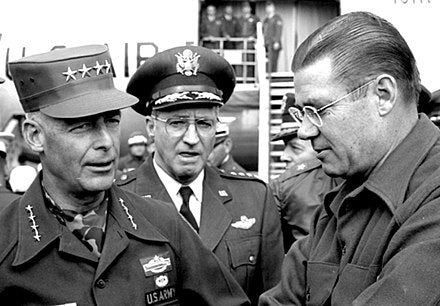
Project 100,000 - The government's 1960's program to send low-IQ troops to war
Project 100,000, also known as McNamara's 100,000, McNamara's Folly, McNamara's Morons, and McNamara's Misfits, was a controversial 1960s program by the United States Department of Defense to recruit soldiers who would previously have been below military mental or medical standards.
Project 100,000 was initiated by Defense Secretary Robert McNamara in October 1966 to meet the escalating manpower requirements of the American government's involvement in the Vietnam War. According to Hamilton Gregory, author of the book McNamara's Folly: The Use of Low-IQ Troops in the Vietnam War, inductees of the project died at triple the rate of other Americans serving in Vietnam and following their service had lower incomes and higher rates of divorce than their non-veteran counterparts.
The project was ended in December 1971 and has been the subject of controversy, especially during the manpower shortages of the Iraq War.
Promoted as a response to President Lyndon B. Johnson's War on Poverty by giving training and opportunity to the uneducated and poor, the recruited men were classified as “New Standards Men” (or, pejoratively, as the "Moron Corps"). They had scored in Category IV of the Armed Forces Qualification Test, which placed them in the 10th-30th percentile range.
The number of soldiers reportedly recruited through the program varies, from more than 320,000 to 354,000, which included both voluntary enlistees and draftees (54% and 46%, respectively). Entrance requirements were loosened, but all the Project 100,000 men were sent through normal training programs with other recruits, and performance standards thus were the same for everyone. The US Army received 71% of recruits, followed by 10% by the Marines, 10% by the Navy, and 9% by the Air Force. (Go Army)
Project 100,000 soldiers included those unable to speak English, those who had low mental aptitude or minor physical impairments, and those who were slightly over- or underweight. They also included a special category made up of a control group of "normal" soldiers. Each of the different categories was identified in the soldiers' official personnel records by a large red letter stamped on the first page of their enlistment contracts. Human resources offices had to prepare reports on them, to be submitted monthly to the Department of the Army. The monthly reports did not disclose the identity of the soldiers.
A 1995 review by Myra MacPherson in the Washington Monthly of McNamara's book, In Retrospect: The Tragedy and Lessons of Vietnam, severely criticized the project, saying that "the program offered a one-way ticket to Vietnam, where these men fought and died in disproportionate numbers ... the men of the 'Moron Corps' provided the necessary cannon fodder to help evade the political horror of dropping student deferments or calling up the reserves, which were sanctuaries for the lily-white."

1 comment
I personally saw a company at Fort Ord, I was coming back to my company. I cut across some barracks and came abound all platoons grap assing, chasing each other.,rolling around, laughing and caring not to any buddy. I saw no one I charge. I stood there for a long time watching. As I was on my way back to my company, my mind could not comprehend, what came to mind was soldiers being rejected. Now I know these men were below average. My heart hurt knowing our treasonous government murdered our innocent. My tears still flows. I Robert Wickert saw this 1966 Fort Ord.